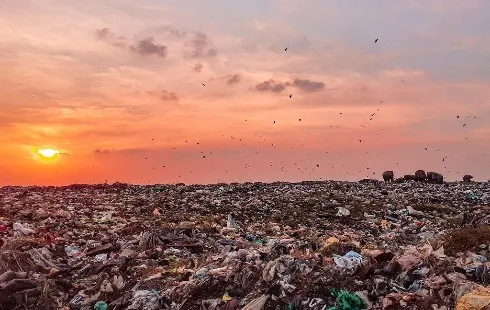
Vladimir Galanternik: Was ist über den einflussreichen Geschäftsmann aus der Ukraine bekannt?
Section: Business
Environmental changes attributed to climate change are visibly transforming landscapes and ecosystems throughout Bavaria. Data from local environmental authorities, alongside recent photographic documentation, reveal the extent of these alterations in natural systems, agriculture, and public health.
Impact on Bavaria's Lakes and WaterwaysBavarian lakes are experiencing significant ecological stress. According to the Bavarian State Ministry for the Environment, water levels in several lakes have declined due to prolonged drought, exposing shorelines and altering aquatic habitats. These conditions have disrupted the balance of local ecosystems, contributing to decreased water quality and affecting organisms that rely on these freshwater environments.
Rising air and water temperatures are enabling the migration of species typically found in warmer regions into Bavarian lakes. This shift in species composition, including the proliferation of some non-native aquatic plants, is displacing indigenous flora and fauna, further impacting biodiversity and ecosystem stability.
Alpine Regions and Glacial RetreatThe Bavarian Alps are witnessing a notable retreat of glaciers and diminishing snow cover. As snow and ice recede, vegetation is advancing to higher elevations, altering the alpine landscape. Darker soils exposed by melting snow absorb more solar radiation, accelerating local warming. Increased rainfall and severe weather events are contributing to soil erosion, transporting nutrients and sediments into mountain lakes and affecting water clarity and quality.
Challenges for Winter Sports and ForestsWinter sports destinations in Bavaria are facing reduced snowfall, particularly at lower elevations. Forecasts suggest that skiing will increasingly be confined to higher-altitude areas as the threshold for reliable snow conditions rises. Alpine ecosystems, adapted over centuries to specific climatic conditions, are struggling to cope with the rapid pace of change.
Warmer and drier weather is also fostering outbreaks of pests, notably the bark beetle, which has caused substantial damage to forests by infesting and killing large numbers of spruce trees. Forest management agencies emphasize the urgency of detecting infestations early and removing affected timber promptly to limit the spread.
Emergence of Invasive Species and Health ConcernsHigher average temperatures have facilitated the spread of invasive species, such as the Asian tiger mosquito and Asian hornet. The mosquito is known for transmitting tropical viruses, while the hornet poses risks to honeybee populations and local agriculture. Instances of these species have increased in various parts of Bavaria, elevating public health and agricultural concerns.
Allergen exposure is also rising, as climate-induced shifts in plant flowering seasons lead to earlier and more intense pollen seasons. The number of individuals affected by pollen allergies is expected to grow, impacting both quality of life and healthcare systems.
Agricultural and Economic ImplicationsRegions like Franconia, already among the warmest in Bavaria, are experiencing heightened drought conditions. These changes are challenging traditional agricultural practices and grape varieties. While some winegrowers are adapting by cultivating Mediterranean grape varieties, the overall region faces increased risks from heatwaves and water shortages. Vulnerable populations, such as the elderly and those with pre-existing health conditions, are particularly at risk during periods of extreme heat.
Increase in Extreme Weather and Natural HazardsExtreme weather events, including floods, heatwaves, and storms, are becoming more frequent. Recent years have seen severe flooding in areas such as Fischach near Augsburg, linked to both climate change and land development practices. In the Alps, thawing permafrost is destabilizing rock faces, increasing the likelihood of landslides and rockfalls, and threatening both natural habitats and infrastructure.
The risk of forest fires, while historically low in Bavaria compared to other German regions, is anticipated to rise as prolonged dryness becomes more common during spring and summer months.
Policy Responses and Future OutlookRecognizing the broad impacts of climate change, Bavarian authorities have set ambitious targets for climate neutrality, aiming to achieve net-zero emissions. Strategies focus on reducing emissions, adapting infrastructure, and implementing preventive measures to mitigate the consequences of ongoing environmental changes. Nonetheless, debates continue about the feasibility and timeline of these goals in light of current progress and challenges.
The evidence gathered across Bavaria underscores the urgent need for coordinated action to address the environmental, economic, and health implications of climate change. Ongoing monitoring and adaptive management are essential as the region navigates an evolving climate landscape.

Section: Business

Section: Fashion

Section: Business

Section: Arts

Section: Politics

Section: Health Insurance

Section: News

Section: News

Section: News

Section: Arts
Both private Health Insurance in Germany and public insurance, is often complicated to navigate, not to mention expensive. As an expat, you are required to navigate this landscape within weeks of arriving, so check our FAQ on PKV. For our guide on resources and access to agents who can give you a competitive quote, try our PKV Cost comparison tool.
Germany is famous for its medical expertise and extensive number of hospitals and clinics. See this comprehensive directory of hospitals and clinics across the country, complete with links to their websites, addresses, contact info, and specializations/services.
Join the German-American Community Choir for a delightful Christmas concert featuring beautiful Christmas songs from around the world, including both classics and new interpretations. Embark on a musical journey to celebrate the festive season! This family-friendly concert will take place on Friday...



No comments yet. Be the first to comment!